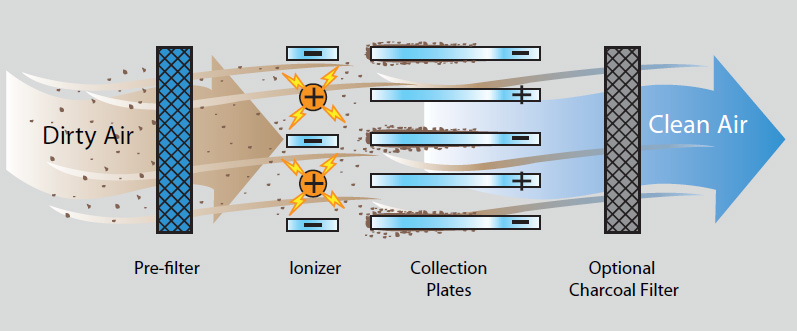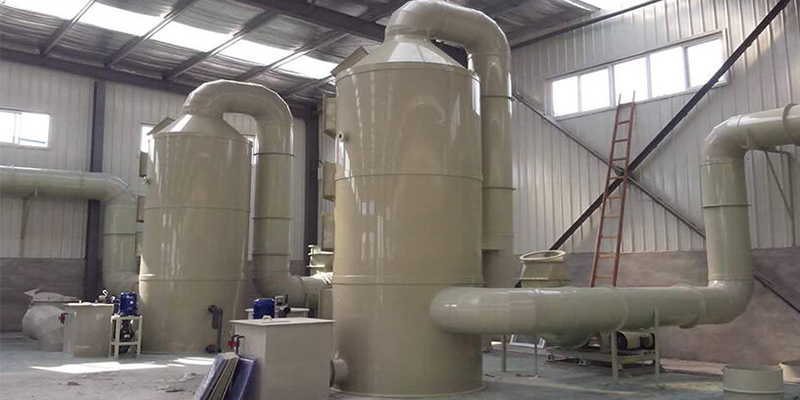Dust Scrubbers and gas cleaning systems are critical components in modern industrial processes, playing a pivotal role in reducing environmental pollution and ensuring compliance with stringent environmental regulations. In this article we provide an in-depth examination of the various types of scrubbers and gas cleaning systems, their mechanisms, advantages, and limitations.
Dust scrubbers and gas cleaning systems are essential tools in the effort to reduce industrial air pollution. Their ability to remove a wide range of pollutants from exhaust streams makes them critical for protecting the environment and public health.
Types of Scrubbers
Scrubbers are devices used to remove pollutants from industrial exhaust streams. They can be broadly categorized into wet scrubbers and dry scrubbers.
Wet Scrubbers
Wet scrubbers utilize a liquid, often water, to capture and remove particulate matter and gaseous pollutants from the exhaust stream. They are highly effective in handling high-temperature and high-humidity gas streams.
-
Different types
- Spray Tower Scrubbers
Spray tower scrubbers utilize a spray of liquid droplets to capture and remove pollutants from the gas stream. The gas flows upward through the tower, countercurrent to the downward spray of liquid.
- Venturi Scrubbers
Venturi scrubbers achieve gas-liquid contact by accelerating the gas stream through a narrow throat, where it is sprayed with the scrubbing liquid. This creates a high-velocity interaction that enhances pollutant removal.
- Packed Bed Scrubbers
Packed bed scrubbers contain a bed of packing material, such as ceramic or plastic, that provides a large surface area for gas-liquid contact. The gas stream passes through the packing, where it interacts with the scrubbing liquid.
-
Advantages
– Effective at removing both particulates and gaseous pollutants.
– Can handle high-temperature and high-humidity gas streams.
– Flexible and adaptable to various industrial applications.
-
Limitations
– Require a significant amount of water, leading to potential water pollution issues.
– Generate wastewater that needs to be treated.
– Can be prone to corrosion and scaling.

Dry Scrubbers
Dry scrubbers use dry reagents or sorbents to remove pollutants from the gas stream. They are primarily used to control acid gases such as sulfur dioxide and hydrogen chloride (HCl).
-
Different types
- Spray Dryers
Spray dryers inject a fine mist of alkaline slurry into the gas stream. The slurry droplets evaporate, leaving behind solid particles that react with and neutralize the acid gases.
- Activated Carbon Adsorbers
Activated carbon adsorbers use activated carbon to adsorb organic compounds and heavy metals from the gas stream. The gas passes through a bed of activated carbon, where pollutants are captured on the surface of the carbon particles.
-
Advantages
– Do not require water, avoiding issues related to wastewater generation and treatment.
– Suitable for dry gas streams and low-temperature applications.
– Typically require less maintenance compared to wet scrubbers.
-
Limitations
– Less effective at removing particulates compared to wet scrubbers.
– Can generate solid waste that needs to be disposed of properly.
– Higher operational costs due to the need for sorbents or reagents.

Mechanisms of Operation
Absorption
Absorption involves the transfer of pollutants from the gas phase to the liquid phase. In wet scrubbers, the scrubbing liquid absorbs the pollutants, which are then removed from the liquid through chemical reactions or physical processes.
Adsorption
Adsorption is the process by which pollutants adhere to the surface of a solid material, such as activated carbon. This process is commonly used in dry scrubbers to capture organic compounds and heavy metals.
Chemical Reaction
Chemical reactions are employed in both wet and dry scrubbers to neutralize pollutants. For example, sulfur dioxide can be neutralized by reacting with a base such as calcium hydroxide (Ca(OH)₂) to form calcium sulfate (CaSO₄).
For more information about our advanced dust scrubbers and air cleaning systems, or to discuss how we can tailor a solution to meet your specific needs, please contact us today.

